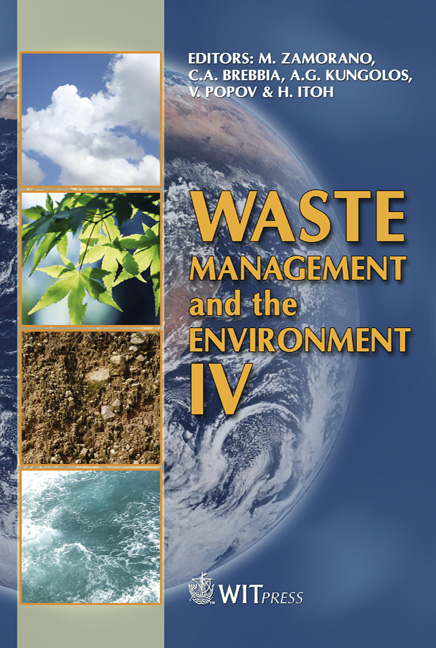Chemical Recycling Of PET By Alkaline Hydrolysis In The Presence Of Quaternary Phosphonium And Ammonium Salts As Phase Transfer Catalysts
Price
Free (open access)
Transaction
Volume
109
Pages
10
Page Range
511 - 520
Published
2008
Size
420 kb
Paper DOI
10.2495/WM080521
Copyright
WIT Press
Author(s)
R. López-Fonseca, M. P. González-Marcos, J. R. González-Velasco & J. I. Gutiérrez-Ortiz
Abstract
Chemical or tertiary recycling of waste polymers including PET, poly(ethylene terephthalate), is the only method according to the principles of Sustainable Development, since it leads to the formation of the raw materials (monomers) from which the polymer is made of. This work has been focused on the determination of the kinetics of the depolymerisation of PET by means of alkaline hydrolysis and on the identification of the catalytic behaviour, if any, of a series of phosphonium and ammonium salts as phase transfer catalysts (9 salts with varying alkyl groups, central cation (N or P) and anion (Cl-, Br-, I-, OH-)). Among the catalysts tested tributylhexadecylphosphonium bromide (3Bu6DPB) is found to be the most effective catalyst. Complete conversion of PET with considerably low catalyst concentration and temperature can be achieved. The selected phase transfer catalyst fulfils the requirements of having enough character in order to be lipophilic, while small enough in order to avoid steric hindrance. The time for complete hydrolysis (>90% conversion) of solid PET under alkaline conditions with 3Bu6DPB at 80 ºC is 1.5 hours and 10 hours without 3Bu6DPB. Keywords: chemical recycling, PET, alkaline hydrolysis, kinetics, phase transfer catalysts.
Keywords
chemical recycling, PET, alkaline hydrolysis, kinetics, phase transfer catalysts.





